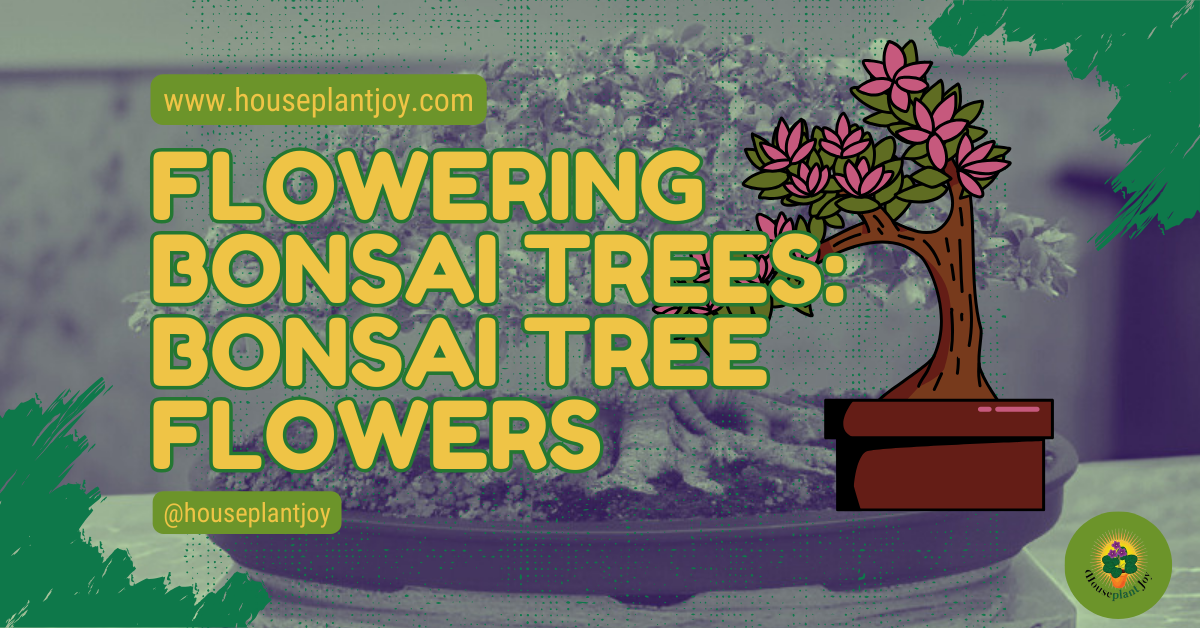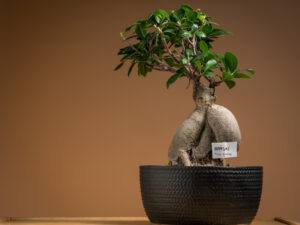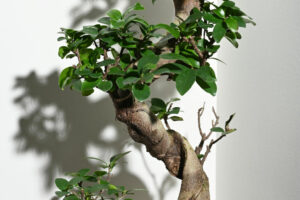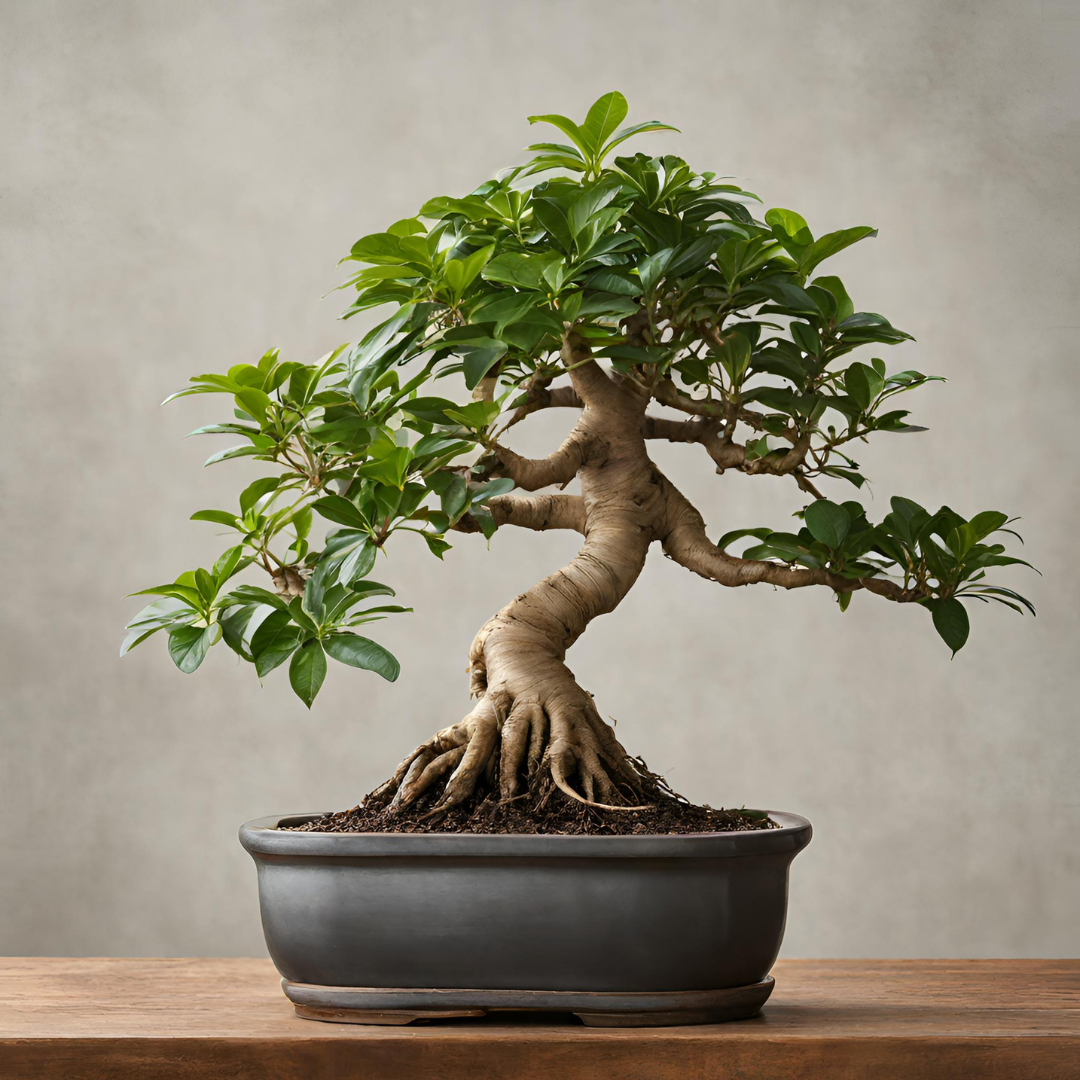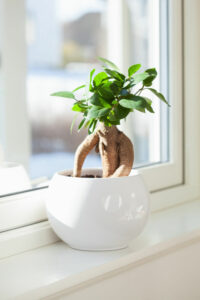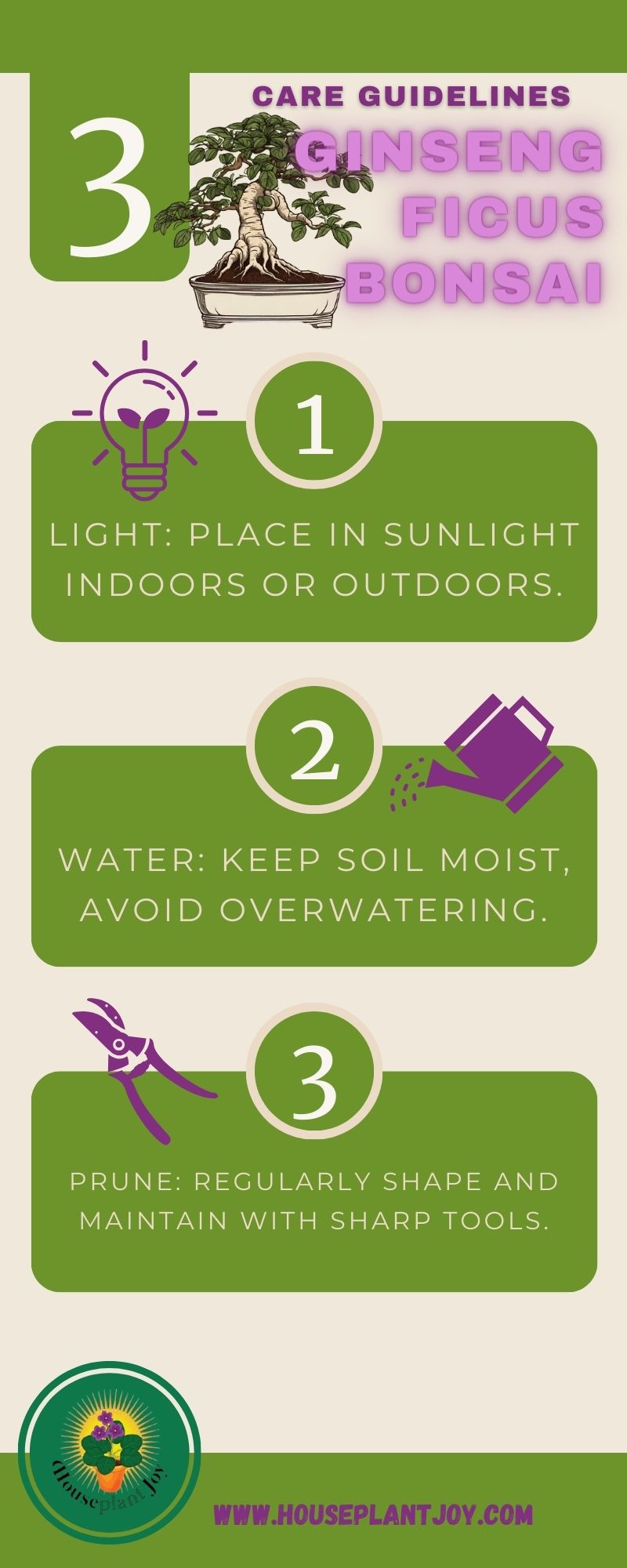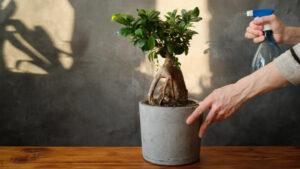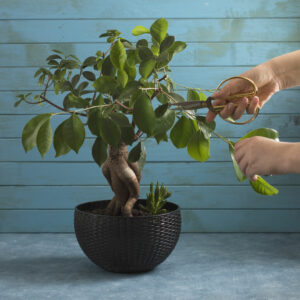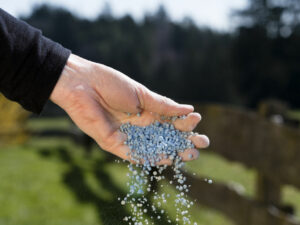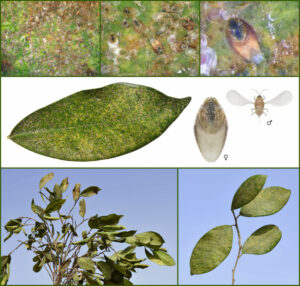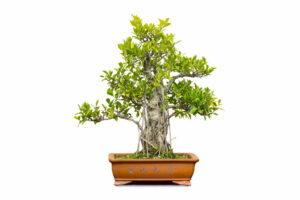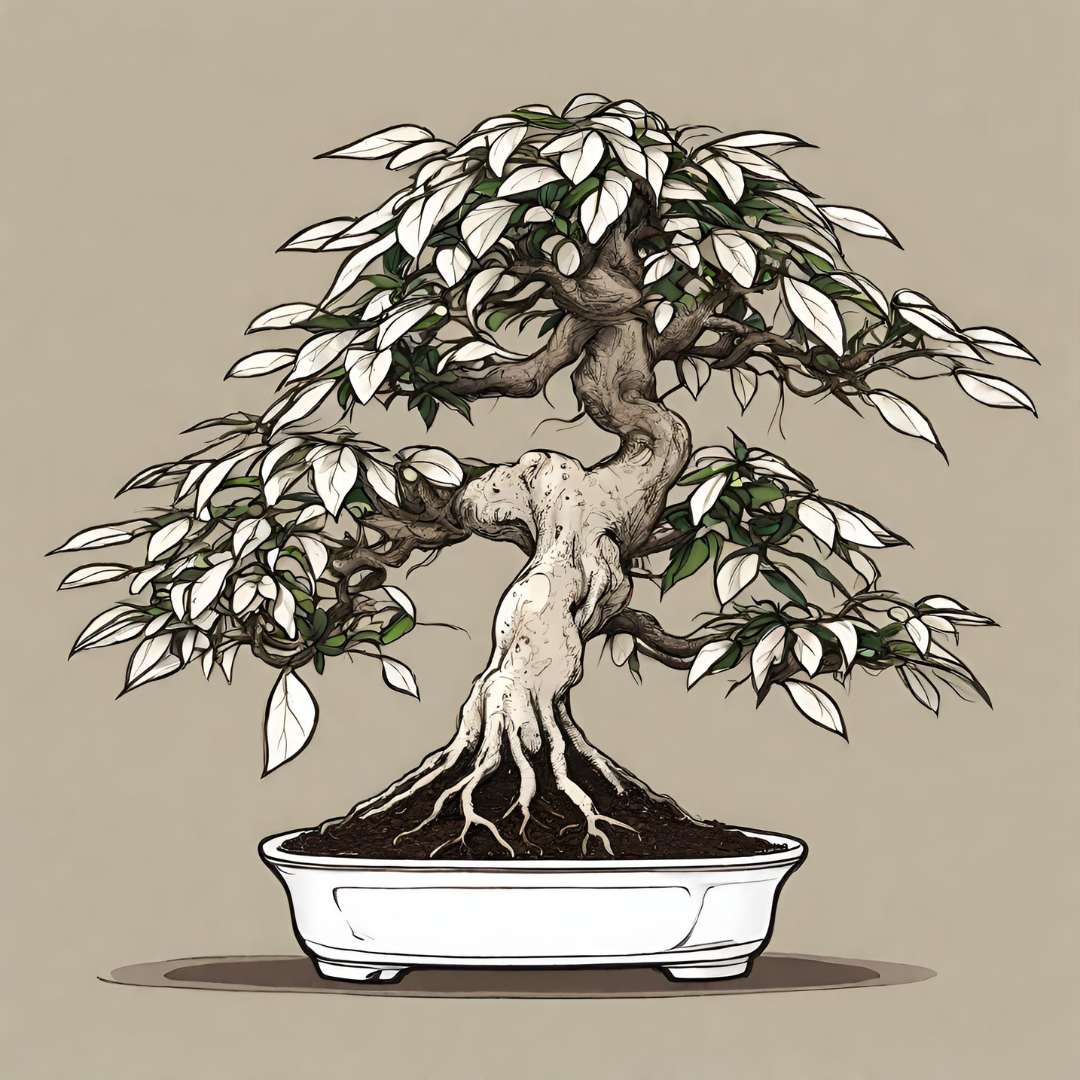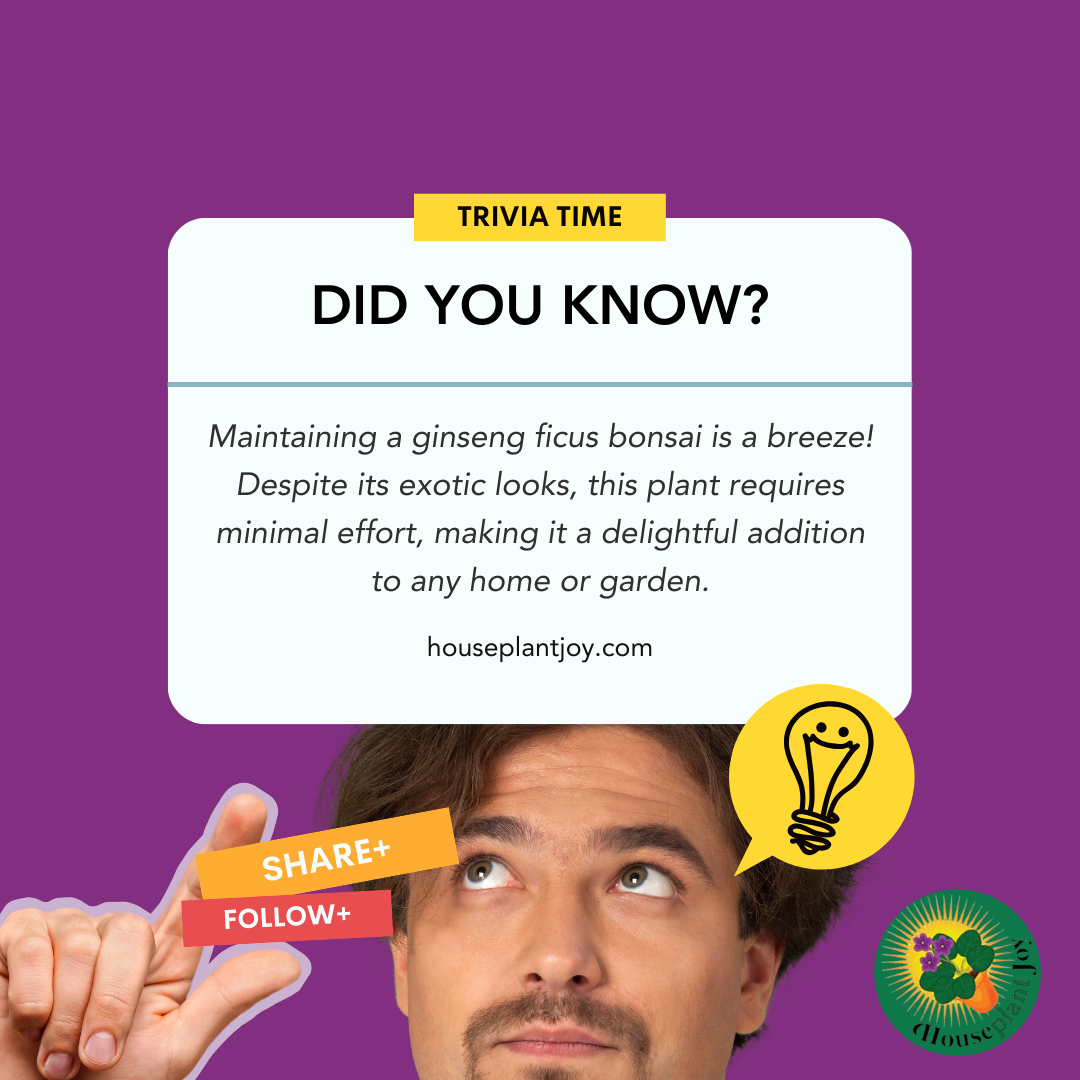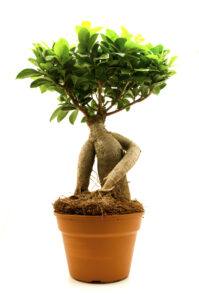HousePlantJoy is supported by our audience. When you purchase through one of our links, we may earn a small affiliate commission. As an Amazon Associate I earn from qualifying purchases. Your cost is not affected.
==================
In this comprehensive care guide, we will address these challenges head-on, providing you with expert tips and solutions to ensure your Ginseng Ficus Bonsai flourishes and becomes a beautiful centerpiece of your home or garden. Say goodbye to the frustration and hello to a thriving bonsai with our valuable insights and advice.
Imagine growing ginseng in a bonsai form. A growing bonsai tree including a ficus ginseng bonsai trees can be tricky. But the result of growing a ginseng bonsai is such awe of introducing the world of miniature trees. Even though it has an unusual appearance, do not be discouraged because this Ficus Ginseng, a popular choice among ficus plants, is very tolerant to beginners. Growing this miniature tree can be your next hobby. But it can sometimes be a gift to your fellow gardeners too. So try doing a beginner ginseng Ficus bonsai tree care today.
What is Ginseng Ficus Bonsai?
Ginseng is translated as “roots” in Chinese. The name ginseng ficus bonsai came from its striking feature of the roots that resemble ginseng bulging dense roots. This ginseng bonsai plant is native to Southeast Asia, also known as a banyan fig, laurel fig and Taiwan ficus. It has a thick canopy of shiny dark leaves oval in shape. Bonsai trees have the appearance of small trees on their legs. Some varieties are Ficus benjamina, and Ficus retusa.
The roots of indoor bonsai, such as ginseng bonsai, are aerial; they can stay exposed on the surface. Its trunk is thick and bulbous, reddish grey, which produces a milky sap that can be poisonous. The best thing about growing ginseng ficus species is it is a bonsai beginner for those who want a bonsai tree with low maintenance. So a Ficus Ginseng plant can be an excellent present for friends, family members, and colleagues.
Also, in a nutshell: Ficus bonsai are miniature versions of fig trees, belonging to the Ficus genus. They are cultivated to resemble small, artistic representations of full-sized fig trees.
Is It Easy To Grow Ginseng Ficus Bonsai?
Yes! Anyone can grow this amazing bonsai tree. This ficus ginseng bonsai tree for its easy-to-care quality, whereas beginners to bonsai plant gardening opt for ginseng bonsai. The plant is resistant to disease, not picky about the environment, and doesn’t mind being moved all the time. It can also survive when it doesn’t get water too often, making it an ideal choice for those interested in cultivating a bonsai tree that grows naturally. Likewise, it can tolerate getting overwatered as well from time to time. Ginseng ficus bonsai is a perfect fit for you to start your bonsai collection.
How to Grow a Ginseng Ficus Bonsai?
Growing your indoor ginseng dwarf tree at home is easy and fun. It won’t even make you sweat or hurt your pocket, especially when you’re a beginner ginseng ficus bonsai tree enthusiast. First, choose a suitable bonsai pot and location with just the right amount of sunlight for your ficus tree care. This Ginseng bonsai loves tropical environments and keeps it warm and moist always. Avoid placing these indoor bonsai ficus trees in cold areas as this is not resistant to frost.
If you want to put your ficus bonsai tree indoors, make sure to prioritize warmth and light in your home. If you live in an arid climate, where the air would be too dry, place ficus bonsai plants out in the summer months in an indirect bright light location. You can water mist this bonsai tree to add moisture to the leaves and roots.
Tips On Growing Ginseng Ficus Bonsai
As we say, growing it is not complicated. But if you want to elevate how you grow your bonsai ficus, these tips will help your perfect bonsai tree. Do not be afraid to show your creativeness in styling your ginseng bonsai. Beauty begins when you work for it. Read more to know how you can grow a healthy and beautiful bonsai tree in the comforts of your home.
Light For Ginseng Ficus Bonsai
It’s a smart idea to put it on a windowsill indoors, especially when caring for bonsai ficus. While sunshine is essential for your bonsai tree, you should take care to protect it from overexposure. The shade is not tolerated by ficus ginseng at all. But you can opt for plant lights to aid your caring for bonsai ficus bonsai tree growth.
Best Place For Ginseng Ficus Bonsai
Since the bonsai ficus ginseng, also known as the ficus bonsai, grows in tropical regions, it is best to place it in sunny windows or open areas where it can receive direct light. Just a note, shady areas are not advisable for bonsai ficus ginseng care. This will result in leaf drops and the drying of roots. While the ficus ginseng thrives in outdoor conditions, it is not resilient to winter frost. Bonsai ficus ginseng can be left outside if the summer temperature is above 15°C.
Soil For Ginseng Ficus Bonsai
If you’re asking what’s the best ficus bonsai soil, it thrives well in a soil mix containing 60% aggregate and 40% organic matter. There are lots of premix bonsai soil mix potting soil options on the market, ideal for cultivating various plants, including the bonsai ginseng plant. You can customize your own blend using components such as pine bark, lava rock, and a water-holding material that slowly degrades over time.
Ficus Ginseng Bonsai Watering
Be attentive because watering plays a big impact in growing it. It is only recommended to water ficus bonsai trees once you see the soil is slightly dry. If your bonsai ginseng plant is in a very hot setting, it may need more frequent watering. Do not overwater your bonsai ficus. This results in fungal disease. Perform regular misting of the leaves to grow some aerial roots and maintain the humidity. Ficus retusa care is crucial for the overall health of your bonsai.
Temperature For Ginseng Ficus Bonsai
One thing about it is that it hates cold temperatures. If you’re planning to place it outside, ensure the temperature does not rise above 60°F. Ginseng ficus bonsai trees like semi-direct sunlight. The waxy surface of bonsai ficus leaves can tolerate low humidity.
Ficus Ginseng Pruning
Pruning is a must, separating a bonsai from a plant. To achieve a thicker trunk in your ginseng ficus bonsai, you can skip pruning for a year or longer. Prune your ficus ginseng bonsai plants during the winter. Sterilize your cutter to avoid plant contamination while pruning ficus ginseng bonsai. Any significant wounds should be treated with cut paste to prevent disease when pruning ficus ginseng bonsai.
Ficus Ginseng Repotting
Once you see signs of root rot in your ginseng ficus bonsai, overgrowing its original pot where the root system is overflowing, this is the right time to repot your ficus ginseng to a bigger pot. Do your repotting session during the summertime; before doing this, do not water bonsai ficus for three days. Cut back a third of its roots before putting the ficus bonsai tree in a fast-draining soil mix. You can report once a year, depending on how fast your bonsai tree grows.
Ficus Ginseng Fertilizer
Applying fertilizer is a good choice to replenish the nutrients in bonsai ficus. Have a keen eye. You cannot fertilize your ginseng ficus bonsai if it’s not growing or weak. Wait until its growing season begins. You can use any multi-purpose liquid fertilizer rich in nitrogen, phosphorus, and potassium. There are available organic fertilizer pellets in any garden center. Fertilize it every two weeks during summer and every four weeks during winter.
Pesticides
Even though experts say, this plant is pest-resistant, during the winter, bonsai ficus is especially vulnerable to pest attacks depending on their location and the time of year. The ginseng bonsai becomes weak to dry air and lacks light resulting in yellowish and leaf drops. Infest like scale or spider mites are the attackers to open cuts.
Insecticide sticks in the soil or insecticide/miticide spraying can kill the pests. You also have to note that the environment of your ficus ginseng must be improved. The recovery process will also aid by using plant lamps for 12 to 14 hours a day and misting the leaves.
Wiring Ginseng Ficus Bonsai
Wiring is the technique done by bonsai experts to train the bonsai ficus branches. Choosing the thinnest branch is more flexible. Once you start wrapping the wire on the beach, slowly reposition it in the direction you like. But avoid wrapping your ficus ginseng too tight or too loose, just enough for it to grow. Use an anodized aluminum wire; this is great for beginners in wiring.
Why Is My Ginseng Ficus Dropping Leaves?
It’s normal for a growing bonsai tree to shed some of its leaves occasionally. But it would be best if you started to worry when there’s an intense or too much dropping of leaves shows problems. Here are some possible reasons why your small tree is dropping leaves.
- Over or under-watering – This is the common reason for the bonsai ficus plant’s leaf drop. It can either drown the roots or dry their roots. It would be best to do frequent misting.
- Pests or too much pesticide – Despite its pest-resistant property. Scales and spider mites can attack ginseng ficus bonsai. Normally, applying pesticides will be enough of a remedy. Too much can also cause severe effects on the plant. It is recommended to switch to organic pesticides instead of chemical pesticides.
- Poor lighting – Ficus ginseng hates shady areas; this makes the leaves yellow and drop. Place it with direct sunlight but not with too much sun exposure.
- Soil pH levels – Maintaining the good pH balance levels of the soil for ficus ginseng is often neglected. You should apply the appropriate amount of fertilizers, neither too much nor too little.
Conclusion
If you’re still hesitant to start growing Ginseng Ficus Bonsai trees. No need to think twice because it’s a must-have in the bonsai community. Growing one is simple and ideal for bonsai beginners. Ficus ginseng growth rate is relatively fast, allowing you to witness significant progress over time. Due to its versatility, you can show your creativity through training its branches. It is a good addition to home decoration. But with proper care and love, your ginseng bonsai should also be in your hand. By this, the tips and guides are mentioned above. It will help your bonsai tree stay healthy and thrive.
Frequently Asked Questions
What kind of soil should I use for my Ginseng Ficus Bonsai?
It prefers well-draining soil with good water retention. A good option is a mixture of 70% akadama, 20% pumice, and 10% lava rock. Adding organic matter such as peat moss or bark improves the soil’s water retention.
When should I water it?
Water your plant when the soil feels slightly dry. Too much water can rot the roots, so don’t do that. Water more frequently in warmer months and less often in cooler months.
Can I grow my Ginseng Ficus Bonsai indoors?
Yes, it can be grown indoors. But, it requires bright, indirect sunlight and good air circulation. Keep the plant away from drafts and maintain a consistent temperature between 60-75°F.
How do I prune my it?
Prune your miniature tree in the spring or summer when it is actively growing. Use sharp, clean scissors to remove dead or damaged branches and shape the plant. You can also prune the roots simultaneously to maintain the plant’s size.
How often should I fertilize my Ginseng Ficus Bonsai?
Fertilize your plant once a month during the growing season (spring and summer) with a balanced fertilizer. Use half the recommended strength to avoid over-fertilizing, which can damage the plant. Stop fertilizing in the fall and winter when the plant is dormant.
How do I repot my Ginseng Bonsai?
Repot your dwarfed tree every two to three years or when the roots have filled the pot. Carefully remove the tree from its pot and trim the roots by about one-third. Replace the soil with fresh, well-draining soil and water thoroughly.
Regenerate response
What are ficus ginseng bonsai benefits?
Ficus ginseng bonsai, a popular indoor ficus species tree, is known for its ficus ginseng benefits, which are air purification abilities and its potential to reduce stress and promote relaxation. Growing and maintaining a bonsai tree can improve focus and concentration while serving as a decorative item in homes or offices. Additionally, bonsai trees, such as Ficus ginseng, are often associated with mindfulness, balance, and harmony, making them a symbol of these qualities in one’s life. Ficus bonsai benefits are what everyone needs right now, so plant your own right now.
Explore the World of Hiking in Florida: Join Our Community!
Follow us on social media for captivating content, product reviews, and a vibrant community sharing their passion for hiking and trails in Florida.
- Facebook: Discover hiking tips and breathtaking trail photos at facebook.com/houseplantjoyblog.
- Instagram: Immerse yourself in the beauty of Florida’s trails through stunning visuals at instagram.com/houseplantjoy20.
- Pinterest: Get inspired by a curated collection of hiking resources, gear recommendations, and trail guides on pinterest.com/houseplantjoy.
- Twitter: Stay up-to-date with the latest hiking news, events, and engage in conversations with fellow hiking enthusiasts at twitter.com/houseplantjoy.
Join our social media community and let’s embark on an exciting hiking journey together! #FloridaHiking #Trailblazers
Related Readings

